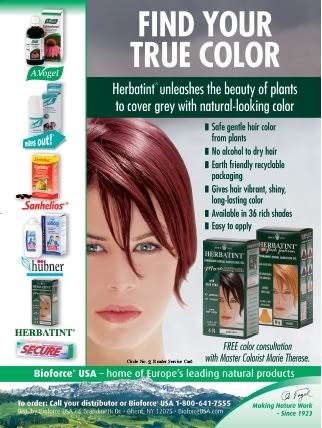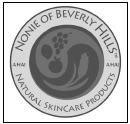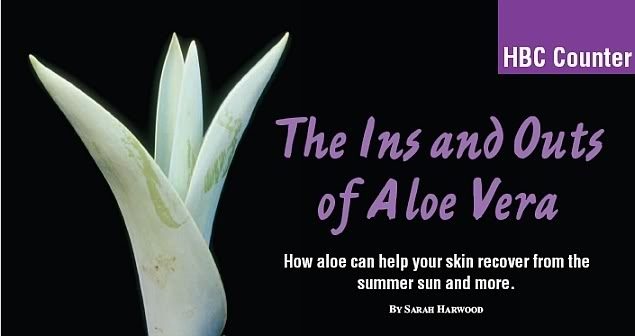Aloe vera’s popularity as one of the most used herbal remedies today should come as a surprise to no one, as it has been an important medicinal plant for thousands of years. Since ancient times, healers have used various parts of indigenous plants to compose remedies for hundreds of diseases and ailments. Aloe was one such plant, its uses having been discovered early on in its native land of Africa. It has been used traditionally for digestive and stomach comfort and is currently popular as a moisturizer. Today, it is also a staple item for beachgoers and others who use it to soothe burns and maintain healthy skin.
Why Aloe?
Sometimes similarities are stronger than differences, as is the case with aloe and skin. Aloe’s pH is slightly acidic, being roughly 4.4–4.7 (1). Since this is very similar to the pH of healthy skin (which is 4.5–6), aloe can easily act as an added layer of protection over damaged skin without causing irritation. The high water content of aloe—99–99.5% of the chemical makeup—also makes it ideal. The other 0.5–1% of its makeup contains many active compounds, including vitamins, minerals, enzymes and organic acids (1). While the complete science behind the compounds is not fully understood, elements found within aloe can act as anti-inflammatory agents and produce other favorable characteristics, thus aiding in the protection and regeneration of healthy skin. In addition, aloe is a good source of antioxidants such as vitamin C, E and zinc.
Skin Care Applications
Packed with beneficial nutrients, aloe is key for a variety of skin care applications. In fact, the soothing properties of aloe are particularly helpful during the summer months when the sun is out in full force. Even if you wear sunscreen, it is possible to be sunburned. Fortunately, aloe can soothe and cool sunburned skin, thus decreasing the amount and length of time of discomfort. The gel can be taken straight from the plant’s spiky leaves (just break them open) or can be found in various natural skincare products. It should be applied generously to the affected areas, and then reapplied as often as necessary.
amount and length of time of discomfort. The gel can be taken straight from the plant’s spiky leaves (just break them open) or can be found in various natural skincare products. It should be applied generously to the affected areas, and then reapplied as often as necessary.
Tell customers to keep aloe products by their kitchen sinks, as aloe can also help with minor burns. This way, the skin can receive immediate relief from the pain of a burn. In addition, when put on minor abrasions, aloe provides a layer of protection against dirt and infection.
Don’t be surprised to find aloe vera listed in the ingredients of some of the cosmetic and beauty care product lines you carry. The cosmetics industry often uses it as an emollient and moisturizer in a myriad of products such as moisturizers, face and hand creams, cleansers, soaps, suntan lotions, shampoos, shaving preparations, makeup, baby lotions and wipes (1).
Aloe can also be used to help with some chronic conditions such as psoriasis. Psoriasis can be painful and unpleasant; when applied topically, aloe can help calm the affected skin without causing irritation to normal skin. Many treatments for psoriasis already have aloe vera as a component, since it has long been recognized as a significant medicinal herb.
The benefits of aloe are not just for human skin; they are good for plants, too. In California, a winery has begun to spray its grapes with a “sunscreen” mixture containing aloe vera and yucca in order to protect the grapes from wrinkling due to sun overexposure (2). The spray is diluted, so by the time the grapes are picked, there is no residue. Overall, it appears to keep the grapes healthier to make better wine.
Additional Uses
While many of the topical uses are well known, there also exists strong evidence supporting the ingestion of aloe supplements (in liquid or gel form) for various reasons. For example, aloe can be used to help those suffering from acid reflux (also known as heartburn), as it both soothes mucous membranes and the lower esophageal sphincter (3).
 It may be useful in two other common afflictions: type 2 diabetes and heart disease, which are becoming more prevalent. In diabetics, evidence suggests it may help as a glucose-lowering agent, whereas in those at risk for coronary heart disease, researchers say it may aid in lowering risk factors such as high cholesterol, lipids and triglycerides (4).
It may be useful in two other common afflictions: type 2 diabetes and heart disease, which are becoming more prevalent. In diabetics, evidence suggests it may help as a glucose-lowering agent, whereas in those at risk for coronary heart disease, researchers say it may aid in lowering risk factors such as high cholesterol, lipids and triglycerides (4).
Aloe has also been used as an alternative type of preservative, more ecofriendly than synthetic preservatives, as the aloe vera gel provides a safe and natural barrier to moisture and oxygen. It contains various antibiotics and anti-fungal compounds that have the capability of suppressing food-deteriorating agents (5).
Be Careful
Aloe vera is helpful in many forms for a variety of ailments and discomforts; but, there are still some important things that must be keep in mind. Retailers should advise consumers that aloe straight from the plant is toxic and should never be ingested. Instead, suggest commercial aloe juice and aloe gel, which are stripped of any harmful components. As always, clients shouldn’t self-treat conditions that are serious. For mild burns, for example, aloe is a good option; if the burn is more severe, they should go see a doctor. WF
References
1. M.D. Boudreau and F.A. Beland, “An Evaluation of the Biological and Toxicological Properties of Aloe Barbadensis (Miller), Aloe Vera.” J. Environ. Sci. Health, 24 (1), 103–154 (2006).
2. M. Locke, “Calif. Vitner Uses Aloe Vera On Grapes,” USA Today, Sept. 11, 2006, www.usatoday.com/weather/news/2006-09-11-grape-sunscreen_x.htm.
3. E.A. Kane, “Aloe For Acid Reflux.” Better Nutrition, April 2007.
4. “Amazing Benefits of Aloe Vera,” TotalHealth Magazine, May/June 2007.
5. “Ecofriendly Alternative to Synthetic Preservatives,” BioCycle, April 2006.
Published in WholeFoods Magazine, August 2008









